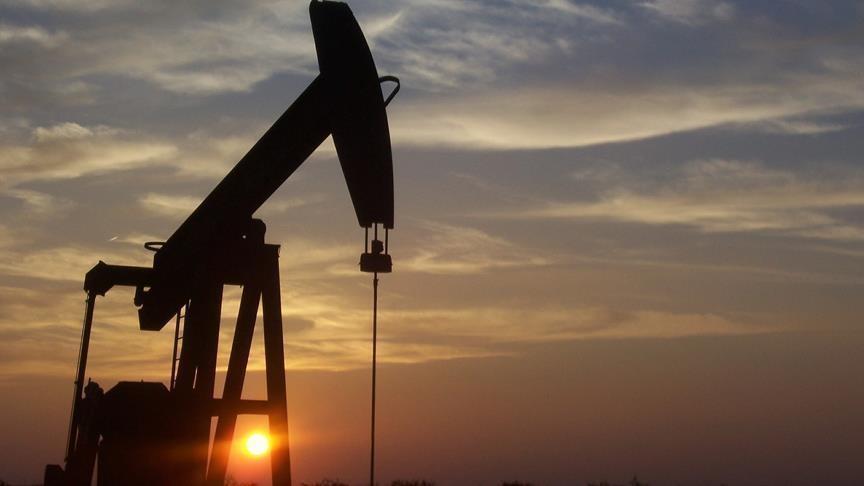

By Anadolu Agency
Nine of the world’s largest oil companies see a 10% drop in their profits for the first half of this year, bringing their total profit down to $129.8 billion.
US-based ExxonMobil and Chevron, Dutch Royal Dutch Shell, British bp, French TotalEnergies, Italian Eni, Russian Rosneft, Norwegian Equinor, and Saudi Arabia’s national oil company, Saudi Aramco are among the world’s top oil firms.
Saudi Aramco reported 9.1% less earnings in the first half of the year, relative to the first six months of last year. The company revealed a profit of $56.30 billion while ExxonMobil saw a 9.6% fall in profit to $17.46 billion.
Royal Dutch Shell’s half-year profit fell to $14.02 billion with a loss of 4.7%; bp reported a 27.5% profit decline to $5.47 billion; Chevron’s profit contracted by 21.1% to $9.93 billion.
Italian Eni’s profit plummeted by 30.4% to $2.06 billion; Equinor saw a 33.1% decrease in profits to $4.54 billion and TotalEnergies saw a 1.4% fall in profit to $9.50 billion.
During this period, Russia’s largest oil company, Rosneft, experienced the biggest increase in profit. The company’s revenue reached $10.52 billion in the first half of this year, up 30.2% from last year.
Rosneft’s profit in the first 6 months of last year was recorded as $8.08 billion.
The net revenues of the companies totaled $129.80 billion in the first six months of the year, down from approximately $143.58 billion in the first half of 2023.
– 600 out of 6,000 ships carry Russian oil
Most market watchers were surprised by Rosneft’s gain amid ongoing war and sanctions, Fereydoun Barkeshli, the president of the Vienna Energy Research Group told Anadolu.
Barkeshli said that Russia is very sensitive when it comes to its share in the oil and natural gas market, adding that the country had a policy of maintaining its market share even before joining the OPEC+ alliance.
In line with the country’s target, Russia not only preserved this share but also increased its exports to the Asian market, particularly to India, he said.
Rosneft also has a large presence in the country’s local market with a share of around 32%, making the company a strong player in Russia, Barkeshli added.
Barkeshli highlighted some oil analysts’ belief that sanctions imposed on Russia can be ignored.
‘Russia has benefited from Iran’s expertise to circumvent sanctions too. According to some statistics, some 600 vessels out of nearly 6,000 vessels that move around in the international waters transport Russian oil,’ Barkeshli said.
Referencing a report published by the Central Bank of Russia in 2022, Barkeshli stated that Moscow predicted the sanctions and financial restrictions that followed the war and advanced planning for its oil and gas revenues ahead of time.
‘Nevertheless, to the best of my knowledge and having studied US sanction over the years, I believe that sanctions will definitely slow down the Russian oil and gas production and exports in the course of time,’ he concluded.
– Bearish demand concerns from China and other regions have dragged crude oil prices down
Despite a minimal increase in production this year from both OPEC and non-OPEC sources, bearish demand concerns from China and other regions have dragged crude oil prices down, according to Rohan Goindi, crude oil analyst at Norway-based consultancy Rystad Energy.
Goindi marked that non-OPEC supply is expected to increase later in the year, especially with the contribution of Canada.
Noting that the global crude oil and condensate supply is expected to increase by 450,000 barrels per day (bpd) in the second half of this year, Goindi said that the amount of refinery processing is estimated to increase by approximately 1.8 million barrels in the same period.
Goindi said that difficulties experienced in the global economy weakened demand, bolstered by weak economic data from China and the US. He also added that China’s crude oil imports, which declined year-on-year, and the country’s high crude oil inventories pointed towards weaker demand in the world’s second biggest oil consumer.
‘While these production cuts are expected to bring some equilibrium, the expected increase in non-OPEC production later in the year will mitigate their impact. Despite a lackluster summer, we foresee a gradual crude demand recovery from the current lows in November and December. In summary, the crude oil balance is likely to tighten towards the end of the year,’ he concluded.
We use cookies on our website to give you a better experience, improve performance, and for analytics. For more information, please see our Cookie Policy By clicking “Accept” you agree to our use of cookies.
Read More